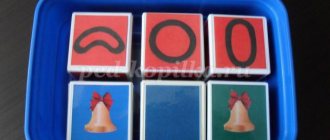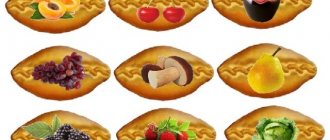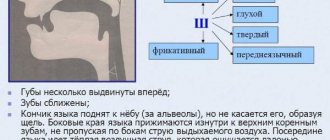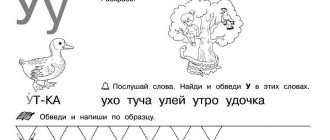Is the division of words into syllables and division for hyphenation the same?
The division of a word into syllables is related to the phonetic (sound) analysis of the word. We divide the word for transfer, taking into account the division into syllables, but still according to morphemes. That is, the transfer, if possible, passes along the boundary of morphemes.
Let’s say that if a word has a double consonant (laugh), when dividing into syllables, the doubled consonant always goes into the next syllable (ra-sme-ya-tsya), while when transferring one letter is supposed to be left on one line and the other transferred (division for transference: laugh-laugh). The rule that a word is hyphenated means that a part of a word shorter than a syllable cannot be left or moved on a line.
How to divide into syllables correctly
There are two phonological schools: Moscow and Leningrad. They have different rules for dividing words into syllables. Most often, school textbooks use the system proposed by R. I. Avanesov (Moscow Phonological School). From his point of view, the syllable division occurs at the place of the greatest difference in sonority. This means that open syllables predominate, because a vowel sound is much more sonorous than almost any consonant. Example : ko-st-chka, Lyu-dmi-la, just stop.
However, if a vowel is followed by a sonorant (l, m, n, r, y), and followed by a noisy one, then the difference in sonority between the sonorant and noisy is greater than between the vowel and the sonorant, and then the syllable division passes between the sonorant and noisy: pro- country
Summary of speech therapy lesson in 1st grade “Syllable analysis and word synthesis”
Topic: Syllable analysis and word synthesis.
Goals: to strengthen children’s ability to divide words into syllables, to give students an idea of the syllabic-forming role of a vowel, to teach them to isolate a vowel from words, to compose words from syllables.
Progress of the lesson
1. Organizational moment.
Hello guys. Now those students who can name a word with two syllables will be the first to sit down. (Children call and sit in their places). Write the date in your notebook.
2. Dividing words into syllables. Vocal emphasis on vowels"
3. Pronouncing words syllable by syllable based on visual material.
We pronounce the word “mountains” syllable by syllable. - “Go” - what vowel do you hear in this syllable? (ABOUT). And in the syllable “RY”? (S) -How many syllables are in the word “Mountains”? (Two). - The word “machine”. How many syllables does it have? Let's clap the number of syllables. Highlight the vowels with your voice. (A, and, a). What helped you determine the number of vowels in a word? (Number of syllables). Conclusion: the number of syllables in a word depends on the number of vowels, and the number of vowels must correspond to the number of syllables in the word. * Working with pictures. Children are given sheets of paper with pictures on them. Below, under each picture, there is a sound diagram, graphic (empty). Children must color in the squares corresponding to the vowel sounds in the names of the pictures with a red pencil. Satchel, plane, rose, scarf. A conclusion is made about the number of syllables in the words - the names of the pictures.
4. Graphic dictation.
Pictures are attached to the board with a magnet: frame, fish, flowers, cube, wheelbarrow, yukva, cat, sleigh. Children are asked to name these words and write down graphic diagrams in a notebook with the designation of vowel letters: a a, ы a,...etc. Those. dashes indicate the number of syllables in a word, and above each of them is written the vowel that is heard in this syllable.
5. Working with sentences encrypted in pictures.
Children are asked to guess the entire three-word sentence from the first syllables of the pictures.
1 word. Pictures: slippers, TV (Tane)
2nd word. Pictures: parrot, dacha, drawing, linden tree (given as a gift).
3 word. Pictures: chicken, turquoise, cinema (cubes).
The resulting sentence is written down in a notebook. Using a simple pencil, children divide non-words into syllables using vertical lines. Vowels are highlighted with a red pencil.
6. Solving puzzles.
Puzzles are posted on the board. Children determine the number of vowels and syllables in them. - In (Around. 2 syllables, 2 vowels: o, u) - Les-nik (depicted forest + nik); - Behind the elephant; - Collar; — Ga-mak (flower); — Par-nick
7. Game “Magic Train” A train (cardboard) and 3 carriages with pockets are placed on the board.
- Guys, this is a magic train. Today it will carry words and pictures, but it will only begin to move if you place the pictures correctly. In the first carriage there will be picture words with 1 syllable in the name. The second has 2 syllables, the third has 3. Let's go!! (Children go to the board, take a picture and place it in the correct carriage, depending on the number of syllables in the word.
8. Composing words from syllables.
Different syllables are written on the board, children must make words from them. Who is bigger? (Syllables: Sto, shka, voz, gu, gor, push, bu, si, kA, fy, ly, spirit,...).
9. Game “Chain of words”.
Continue the chain: the last syllable in a word is the beginning of a new word. Paper - garage... (etc.) Children go to the board and write down the words one by one.
10. Summary of the lesson.
— Guys, what did we do in class today? — What helped you determine the number of syllables in words? — What did you like about the lesson?
Author of the material: Olga Nikolaevna Uslugina
Also on topic:
Sound-syllable analysis and synthesis
summary of a literacy lesson on the topic: “Dividing words into syllables”
To solve the tasks, I used a lesson structure whose stages work to achieve the lesson’s goals.
At the beginning of the lesson, I set the children up for positive emotions, the mobilizing part. Statement of educational problem. Determining the topic of the lesson.
Since this is a lesson in learning new material, to activate cognitive interest and instill a love for the subject, taking into account the age characteristics of the children, I introduced solving riddles and a crossword puzzle into the lesson. She created a problematic situation that helped lead the children to the topic and purpose of the lesson. The main stage of the lesson is the formation of new knowledge. Children are given a problem, and through reflection and research they “discover” something new and find a solution. At different stages of the lesson, the presentation of material progressed from simpler to more complex. The answers at the initial stage were erroneous and varied; from task to task, the children worked better and self-assessed their knowledge.
The lesson content material was selected in accordance with the goals. I used such forms of work with tasks that emphasized the child’s continuous movement from the practical use of language to the “discovery” of its structure and conscious, and therefore more perfect mastery of it:
— frontal work (repetition of the algorithm);
- work at the blackboard, developing the ability to work with an interactive whiteboard, feeling comfortable in the lesson;
- individual work - allows you to develop students’ attention, concentration, and the ability to use new knowledge.
— working in pairs — serves for psychological relief, removing the fear of making a mistake;
— creative work — serves to develop students’ coherent speech and create an atmosphere of kindness, trust, and respect for each other in the classroom.
Reflection on the lesson showed that most children understood the new material and were emotionally satisfied. Therefore, I can conclude that the variety of forms of work, the change of mental actions allowed me to solve the assigned tasks of the lesson.
I believe that I was able to explain the new material, and using the problem-based teaching method was most effective. All stages of the lesson allowed the children to consolidate their acquired knowledge and repeat the application of the algorithm in their work.
Changing types of activities and interesting tasks helped maintain the children’s well-being and mood, as well as productive motivation to learn. Thus, I believe that the forms, methods and techniques, and gaming technologies that I used in the lesson helped to fully achieve the main goal of the lesson: to introduce children to ways of dividing words into syllables. During the lesson, potential opportunities for learning were used: the focus of educational work on improving types of speech activity: speaking, listening, reading. There was a development of children's linguistic thinking, their linguistic intuition, natural sense of words, and interest in learning language. The result was obvious.
What is a syllable
A syllable is an element of a word that we pronounce in one impulse of air.
The vowel is the syllable-forming sound in Russian. That is, a syllable must have a vowel sound; it forms the basis.
Sometimes, if there are three or four consonants nearby in a word and among them there is a sonorant [r] or [l], it takes on a syllabic function: Alexander, meaning. Then we pronounce the word with a small overtone near the syllabic consonant. But at school it is not customary to highlight such a syllable.
In addition to the vowel, a syllable may contain consonant sounds, but they may not exist: o-sen.
Syllables can be open (ending in a vowel) or closed (ending in a consonant).
Once upon a time there were only open syllables in the Russian language; In the process of language development, a number of vowels disappeared, the number of syllables decreased and some of them became closed.






